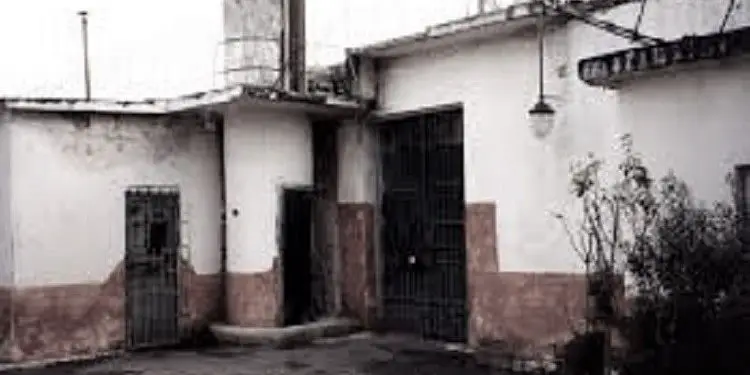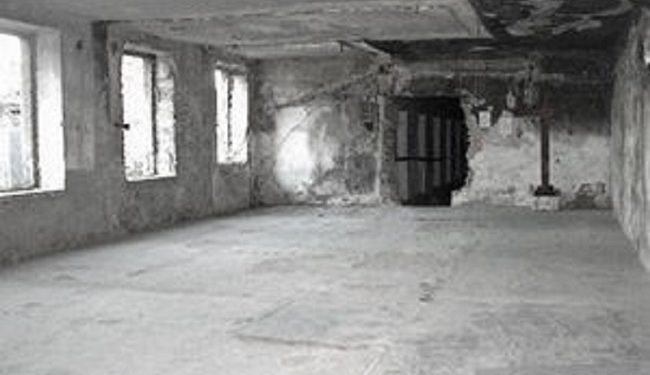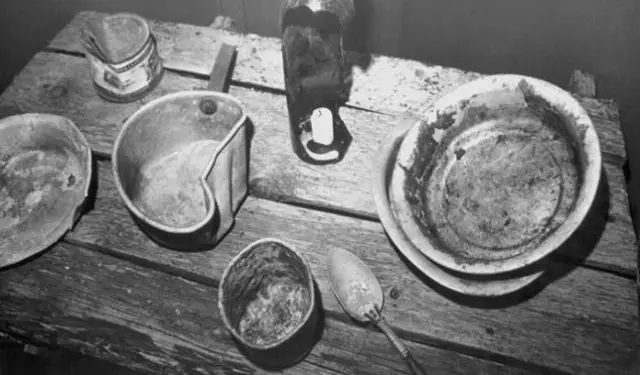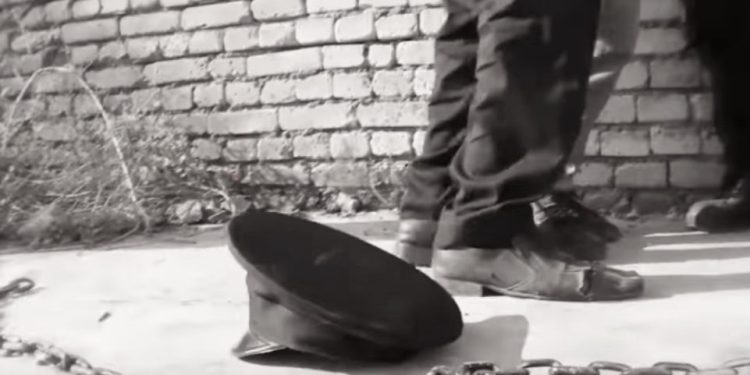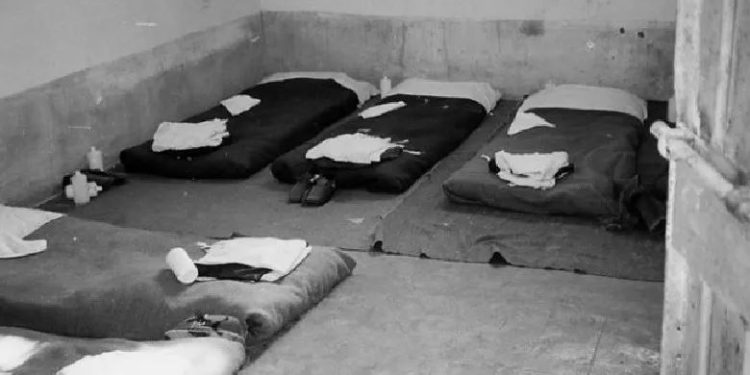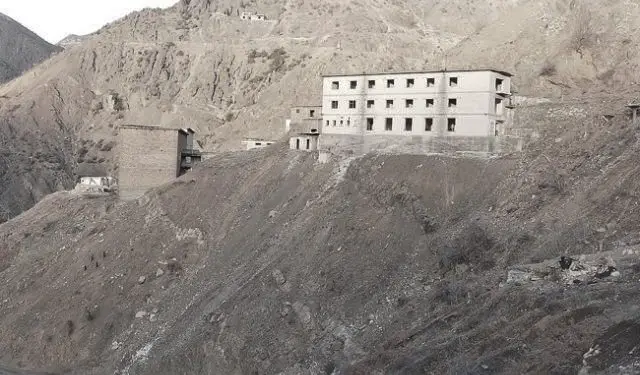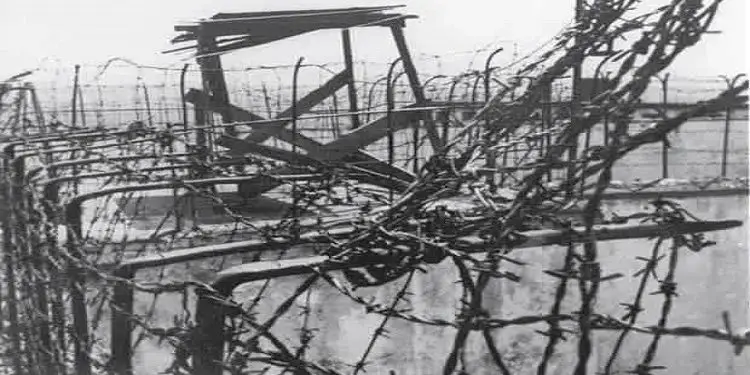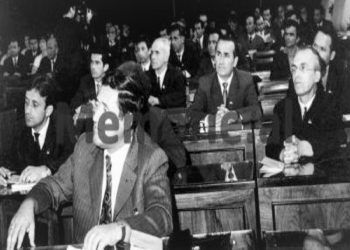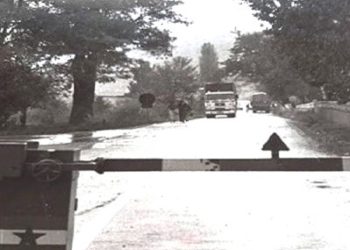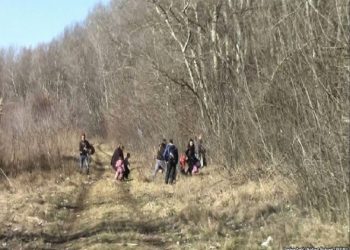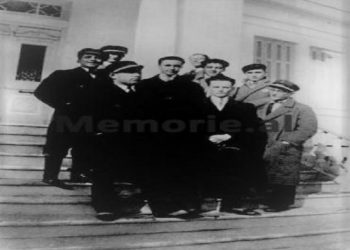From Agim Musta
Part four
Memorie.al / On the fourth anniversary of the passing away of the well-known historian, researcher, writer and publicist Agim Musta, (July 24, 2019), former political prisoner, his daughters Elizabeta and Suela, gave him the right to exclusivity for the publication, by the online media Memorie.al, of one of the author’s most prominent publications, such as the ‘Black Book of Albanian Communism’. This work contains numerous data, evidence, facts, statistics and arguments unknown to the general public, on communist crimes and terror in Albania, especially against intellectuals, in the period 1945-1991. The publication for the first time of parts of this book is also the realization of one of the bequests of the historian Agim Musta, who, from the beginning of 1991 until he passed away, for nearly three decades was engaged with all his powers, working to raise collective memory, through book publications and publications in the daily press. All that voluminous work of Mr. Agim Musta, concretized in several books, is a contribution of great value to the disclosure of the crimes of the communist regime of Enver Hoxha and his successor, Ramiz Alia. A good part of the publications of Mr. Agim Musta, is also translated into English. Thanking the two daughters of the late Musta, who chose Memorie.al, to commemorate their father, from today we are starting the publication, part by part, of the “Black Book of Albanian Communism”.
Continues from last issue
-The prisons of the Albanian communist state-
(1945-1991)
- Mirdite Rap Camp. This camp was set up in Rreps village, by the river Fan, where the roads to Orosh and Spaç divide. The camp was built on the mountainside and had a staff of 300 former political prisoners. As a command, Rrepsi depended on the Spaçi camp, where the commander was Çelo Arza and Commissar Shahin Skura. The commander was noted for his ferocity, while the commissar was a boastful charlatan. All the guards of the camp were known for their wetness and vileness.
The objective of the camp was to open three terraces on the mountainside, where 10 objects of the copper enrichment plant would be built. The work was very difficult and was done only with pickaxe, pickaxe and sledgehammer. Strong wind and ice during the winter made life in the camp very difficult. The coffins and gallows were held in the weakened hands of the prisoners. Many old convicts fell ill and some of them died. The works in this camp continued during the period of 1968-1970.
- Ballsh camp. This camp was set up 2 km. east of the city of Ballshit, in a narrow valley surrounded by high hills. At the beginning of 1972, when the works started, the camp had strength of 800 political prisoners. One of the biggest works would be built here, with Chinese help: the “Deep Oil Refinery Plant”.
The works were led by Chinese engineers. The number of prisoners in this camp increased every day and at the beginning of 1974, it reached 2000 people. Since most of the prisoners were exhausted from the heavy and difficult work they had done in the long years of their sentences, the productivity at work was very low. The command of the camp began to take measures to force the convicts to increase the yield. The tortures began and an isolation room was created to annihilate those prisoners, whom the camp command called initiators of sabotaging the construction of the work.
The Chinese technical leadership of the work, after analyzing the reasons for the work not proceeding properly, concluded that: a work like that of Ballshi, could not be built with picks and shovels, but with modern machinery. In this camp, which was erected from 1972 to 1987, several hundred prisoners, over the age of 60, who suffered from many diseases, were gathered. What will not be forgotten from this camp was the silo for the mentally ill, who were kept there due to a lack of places in the Psychiatric Hospitals of Elbasan and Tirana.
The valley where the factory was built was named by the prisoners; “Valley of death”, that in the summer months the temperature in the sun reached very high figures. Three prisoners have died from the drop of the sun. Among the intellectual prisoners who died in this camp, we can mention the painter Vangjush Tushi, the clergyman, Dom Marku, etc. In this camp, Durim Veledi was killed in an escape attempt, together with one of his friends. The plot where several dozen prisoners were buried, when the works at the factory were finished, they put the bulldozer on it, to eliminate all traces.
Note: It should be noted that during the years 1946-1950, with political prisoners, the foundations of the Tirana Textile Factory were built and during the years 1962-1963, in Tirana, those of the Autotractor Factory.
E) Forced labor camps for the construction of airports
- Ura Vajgurore camp. This camp was set up 12 km. west of the city of Berat. The prisoners of this camp would work for the construction of the Kuçova military airport. The works were directed by the military specialists of the Soviet Union. For the construction of this airport, 2,000 political prisoners and 1,000 Albanian soldiers of the labor brigades worked, since the treatment and food differed very little from each other. The works started in 1948.
At first, the prisoners were brought every day from Berat prison, but after a mass escape in 1949, when some prisoners were able to cross the state border and escape to Greece, the Ura Vajgurore camp was established. Some of the convicts of this camp worked in the quarry to extract stones for paving the runway, while others worked on leveling the field, opening drainage channels and building the runway. He worked 10 hours a day, with 600 grams of corn bread and potato soup. A large part of the prisoners, especially those who worked in the quarries, fell ill with silicosis, which damaged the respiratory organs. In this camp, there were 30 dead and 7 shot for trying to escape, as well as several dozen new convicts. The works at the Ura Vajgurore camp were finished in 1953.
- Rinas camp. Rinas camp was raised 17 km. in the north-west of Tirana, in Rinas village. The object of this camp, with an effective of 1700 political prisoners, was the construction of the international airport of Rinas, the largest in our country. The work was very hard, especially pushing the wagons filled with stones, each prisoner did 30 km. road with a great strain for pushing 2 ton wagons. They worked 10-12 hours a day and the prisoners were not allowed to enter the silos before 8:00 p.m.
Water was rationed, one cup a day, for each convict. Even from this camp, there were attempts to escape. Three convicts, after many vicissitudes, were able to cross the state border and reach the USA. Those caught, after being cruelly tortured, were re-sentenced to 25 years in prison. The works at Rinas airport continued during the years 1953-1957. Before the inauguration of the airport, when the prisoners were carrying out the final works, an American reconnaissance plane, piloted by a major, suddenly landed like a “meteor stone” on the runway of Rinas. The bewilderment and confusion of the camp command was so great that the guards began to shoot in the air, shouting at the prisoners to lie down and not move.
After a few minutes, senior officials of the Ministry of Internal Affairs and the Ministry of Defense arrived at the airport. They took the American pilot with them, who they kept for 10 days in a secret base of the State Security and then they let him free to leave Albania, with the intervention of the Soviet Government. He refused to take the plane, stating that it was defective and out of order. Later, the model of this plane was sent to the National Weapons Museum in Gjirokastra as a “war trophy”, where it continues to be today.
F) Forced labor camps in mines
- Bulqiza camp. In 1946 in Bulqiza, the first camp was built with political prisoners, to work in the mine. At the beginning, the camp had strength of 700 convicts, but within three years, the number of prisoners in this camp reached 1500 people. It was worked in three shifts to extract chrome ore. Living and hygienic conditions in the camp were deplorable. The calories received in the daily food were only 1/3 of those consumed by a prisoner working in the gallery. The mine lacked any measure of technical security. The labor rates were very high and unfeasible for the vast majority of prisoners. Those who did not fulfill the norm were beaten by the guards and forced to work in the gallery for 16 hours, and there were even cases for 24 hours without a break. No care was taken for the health condition of the prisoners. They took them to work even when they were sick, even with a temperature of up to 38 degrees. Dozens of prisoners fell ill and died without treatment.
There was not a week in the Bulqiza galleries without an accident or a prisoner being killed. On a hill near the camp, the Bulqiza mine necropolis was established, where 2,500 political and ordinary prisoners were buried for 45 years. Bulqiza became synonymous with a large grave for Albanian prisoners. When someone in Albania was threatened by any authority, at work and everywhere, they were told: “You will go to Bulqiza”! In November 1956, after the Hungarian revolution, the political prisoners were removed from Bulqiza, due to the proximity of the border with Yugoslavia and from the information that the Ministry of Internal Affairs had that a mass escape were being prepared in the Bulqiza camp. They distributed them to other forced labor camps. Instead, 2,000 ordinary prisoners were sent there. This camp-prison functioned until 1991, when pluralism was established in Albania.
- Camp of Spaci. The Spaçi camp was built by ordinary prisoners in the beginning of 1968. The camp was built in the hollow of a bare mountainside, surrounded on all sides by mountains, where only a dome of the sky could be seen. Initially, some old barracks of the geology enterprise, built in 1953, served as sleeping silos. The first political prisoners, who were sent to work in the Spaç galleys, in May 1968, to extract from the depths of copper and pyrite soil, they were from the prison camp of Elbasan, who worked and built the Cement Factory.
They were greeted with shouts in chorus: “Here we made the grave! Here we made the grave”! From ordinary prisoners, who continued to surround the labor camp with barbed wire and bodyguards? Of course, those wretches were taught the slogan by the Security officers, whose division had designed Spaçi, as: “The grave of the enemies of the Party and the people”! The prisoners, from the beginning there were about 600 people, worked in three shifts, with primitive tools and without any measure of technical security. For 6 months of the year, there was snow and ice. The temperature in winter dropped to minus 15° C. In the winter frost, prisoners who did not meet the norm were tied to posts with steel cables, covered with snow and ice, until they lost consciousness. The hygienic-sanitary conditions in Spaçi camp were deplorable. Prisoners who defied the guards’ orders were brutally beaten.
Another torture that was practiced on the prisoners of Spaçi, for every day, was standing for hours, under the pretext of counting. Thus, the daily work schedule reached from 8 to 10-11 hours a day. When they addressed the prisoners, the guards and the camp officers had on the tip of their tongue the saying: “You will not get out of Spaçi either alive or dead.” (The corpses of prisoners who died before completing their sentences were not given to their families). The dungeons of the camp were always full of convicts for the most absurd reasons. They were kept there for up to 1 month with dry bread and only a blanket. Before the revolt of May 23, 1973, the prisoners of Spaçiti had addressed many times to the Ministry of Internal Affairs and the high bodies of the Party-state, for the prohibition of the violence without cause, which was exercised on them. Their demands fell on deaf ears and violence continued as before. The start of the Spaçi revolt started precisely with the explosion of the dungeons by the brave prisoner, Hulusi Pashollari.
He released 12 prisoners, who were serving sentences without any serious cause, on May 21, 1973. There, the fight with the internal guards of the camp began who retreated in front of the revolted crowd of convicts and went outside the camp. The inner camp fell into the hands of the prisoners. The revolt erupted like a volcanic eruption. It was the peak of the protest, for the trampling of human dignity. The forced slave labor and the daily violence exercised on the convicts had driven the knife of the dictatorship of the proletariat to the bone. He couldn’t stand it anymore. Even the cowards became brave and rushed to the head of the revolted crowd. Better an instant death than endless torture. In the camp there were shouts: “Long live freedom”! “Down with communism”! “Down with the dictatorship”! In the middle of the camp, the national flag was raised, without the communist star.
The Political Bureau of the PPSh Central Committee, taken by surprise by this unheard of revolt until then, ordered its suppression by any means. Two days later, on May 23, 1973, hundreds of Special Forces stormed the camp, brutally beating the exhausted prisoners. They arrested 115 prisoners, four of whom: Hajri Pashaj, Dervish Bejko, Pal Zefi and Skënder Daja, sentenced them to death and executed them within a few days; Another 111 prisoners were sent to the central investigation in Tirana, where they were subjected to the most cruel tortures. They were brought to a staged trial in Rrëshen and sentenced to a total of 1,700 years in prison.
This was the fatal end of the Spaçi revolt, the biggest revolt in the history of prisons and forced labor camps in Albania during the communist regime. According to the research done, the Spaç Revolt is the largest in all the former socialist countries of Eastern Europe, with the exception of the former Soviet Union, for whose camps and prisons, we do not have accurate data. After this revolt, violence and terror in the Spaçi camp increased even more. Six years later, in the Spaç camp, another trial was staged, where intellectuals Vangjel Lezho, Fadil Kokomani and Xelal Koprencka were sentenced to death and executed. The forced labor prison of Spaçi, which continued for almost a quarter of a century (1986-1990), entered the history of Albania as the most terrifying place for political prisoners and their families. Dozens of prisoners died in this camp, from diseases, suicides and accidents at work.
- Qafe-Bari camp. – This camp started with 400 political prisoners in 1982. The camp was built 21 km. to the east of the city of Fushë-Arrëzi, in a very isolated place. It was worked in three shifts, to extract copper ore deep in the mountain. The conditions were even more difficult than those of Spač. Violence and torture were the order of the day. Sick prisoners with high fever were also taken to work. The winter was harsh and temperatures dropped to minus 20 degrees C. Meetings with family members were impossible, due to traffic. Life had become unbearable for the prisoners in these conditions. 11 years after the Spaçi Revolt, and exactly on May 24, 1984, the Qafë-Bari Revolt broke out.
The reason for this revolt was the beating of the prisoner Ndue Pisha, because he had not fulfilled the daily norm. The co-sufferers knew that Ndue Pisha was not working hard, but he was sick and needed to be hospitalized. Instead of curing him, the guards began to beat him barbarically, in the middle of the camp. This cruel behavior revolted the prisoners. They jumped to the defense of their friend and beat the guards, who ran wildly out of the camp. On the orders of the camp commander, Edmond Caja, fire was opened on the camp with rifles and machine guns. Several prisoners were injured. The alarm was given and the entire territory of the Republic.
From Tirana, the director of the State Security, Agron Tafa, who was also the Deputy Minister of Internal Affairs, arrived by helicopter at the Qafë-Bari camp, accompanied by a special squad of sampistas. The prisoners were given an ultimatum to surrender within 1 hour; otherwise, fire would be opened with all weapons. All those convicted would be killed. The leadership council of the revolt decided to surrender the camp to avoid bloodshed. Although Agron Tafa promised the prisoners with a megaphone that if they surrendered, no action would be taken against them, the promise was not kept and 40 people were arrested, including: Sokol Sokoli, Tom Ndoja and Sandër Sokoli were sentenced to death and executed within a few days. And 14 other prisoners were re-sentenced with heavy prison terms. The Qafë-Bari camp was closed at the end of 1990.
Prison hospitals and psychiatric hospitals for former political prisoners
During the years 1945-1950, no care was given to sick prisoners. When they were in a very serious state of health, they were visited by prison nurses, who were salaried non-commissioned officers, and in special cases, by doctors from the Department of Internal Affairs. These doctors were healers and torturers, according to the case and the interest presented by the detainee or prisoner, for the State Security bodies. There are countless testimonies of such events. In the creation of forced labor camps, inmate doctors and nurses served near the camp ambulance, which were under the orders of the salaried nurses of the command. Of course, the condemned doctors and nurses showed a special care for their fellow sufferers, but the opportunities to cure them in the conditions of the camps were minimal. It should be noted that there were camp doctors who did their best to save the lives of fellow sufferers. Such were the doctors: Isuf Hysenbegasi, Miço Konomi, doctor Jetullah Gashi originally from Kosovo, Greek doctor Serafinis and some others.
- Hospital – prison of Tirana:
From the mid-1950s, a hospital-prison with several wards was created on the territory of the Civil Hospital of Tirana. Although the hospital was surrounded by high walls, barbed wire and heavily armed guards, the rules were similar to those of prisons. Convicts working in forced labor camps were usually sent to this hospital, which had to be cured to continue working as 20th century slaves. From the closed prisons, the cases of being sent to the hospital were very rare and the patient could be sent when he was in the last moments of his life. The corpses of convicts who died in the prison hospital were used as models (teaching tools for students) and there are rumors that some of them were sold abroad. How many were treated and how many died in this hospital? No one knows and will never learn, as all his records have been destroyed.
- Annex of the Tirana Sanatorium
TB disease was not absent among the prisoners and this presented a risk of infecting other prisoners in the camps who worked to build the various works of Socialist Albania. In 1964, in the central sanatorium of Tirana, which was built by the political prisoners themselves, an annex was opened for prisoners suffering from pulmonary diseases. The number of patients in this annex of the Sanatorium reached up to 100 people.
- Vlora Psychiatric Hospital
Psychiatric Hospital of Vlora; built after the Declaration of Independence of Albania, it was the only psychiatric hospital in Albania, until the end of the 50s, when the Psychiatric Hospital of Elbasan started operating. In the Psychiatric Hospital of Vlora, there were 2 rooms for prisoners who were in a very bad mental state and very aggressive. The prisoners of this hospital were constantly kept handcuffed with irons and they were not given any treatment. They were brutally beaten by the hospital staff to hasten their death.
- Psychiatric Hospital of Elbasan
At the end of the fifties, the Psychiatric Hospital, the largest in the country, began to operate in Elbasan. Some wards of this hospital were made available to the Ministry of Internal Affairs, for political and ordinary prisoners. The following were sent to the Psychiatric Hospital in Elbasan:
A) Schizophrenic, overly aggressive prisoners who hindered work in forced labor camps.
B) Prisoners who had suffered severe trauma during the investigation, as a result of the use of torture.
C) Convicted for agitation and propaganda by the layers close to the rulers, to pass on the horror to their relatives.
Detained because Security suspected their identity. They kept these patients isolated from other patients.
The Psychiatric Hospital of Elbasan was a mysterious isolation center, where employees of the State Security bodies acted freely for their dirty work. Within the walls of that hospital, there were dozens of prisoners with the most dramatic and mysterious stories. Dozens of prisoners have died by suicide or killed by the Security with the most diabolical methods. The Psychiatric Hospital of Elbasan has been a mine of undiscovered crimes until today and it is very difficult for them to come to light, as all documentation has been deliberately disappeared, so that the truth of what happened in that hell will never be known. Dantesque. Memorie.al
The next issue follows




